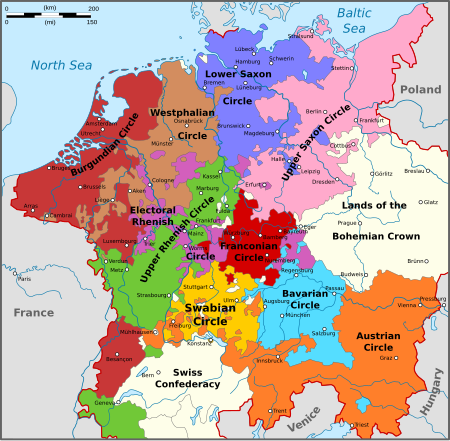
Back Kreits Afrikaans Círculu Imperial AST İmperiya dairəsi Azerbaijani Имперски окръг Bulgarian Cercle Imperial Catalan Říšský kraj Czech Reichskreis German Αυτοκρατορικός κύκλος Greek Imperia cirklo Esperanto Círculo imperial Spanish
This article includes a list of references, related reading, or external links, but its sources remain unclear because it lacks inline citations. (September 2021) |

During the early modern period, the Holy Roman Empire was divided into imperial circles (Latin: Circuli imperii; German: Reichskreise [ˈʁaɪçsˌkʁaɪzə]; singular: Circulus imperii, Reichskreis [ˈʁaɪçsˌkʁaɪs]), administrative groupings whose primary purposes were the organization of common defensive structure and the collection of imperial taxes. They were also used as a means of organization within the Imperial Diet and the Imperial Chamber Court. Each circle had a circle diet, although not every member of the circle diet would hold membership of the Imperial Diet as well.
Six imperial circles were introduced at the Diet of Augsburg in 1500. In 1512, three more circles were added, and the large Saxon Circle was split into two, so that from 1512 until the collapse of the Holy Roman Empire in the Napoleonic era, there were ten imperial circles. The Crown of Bohemia, the Swiss Confederacy and Italy remained unencircled, as did various minor territories which held imperial immediacy.